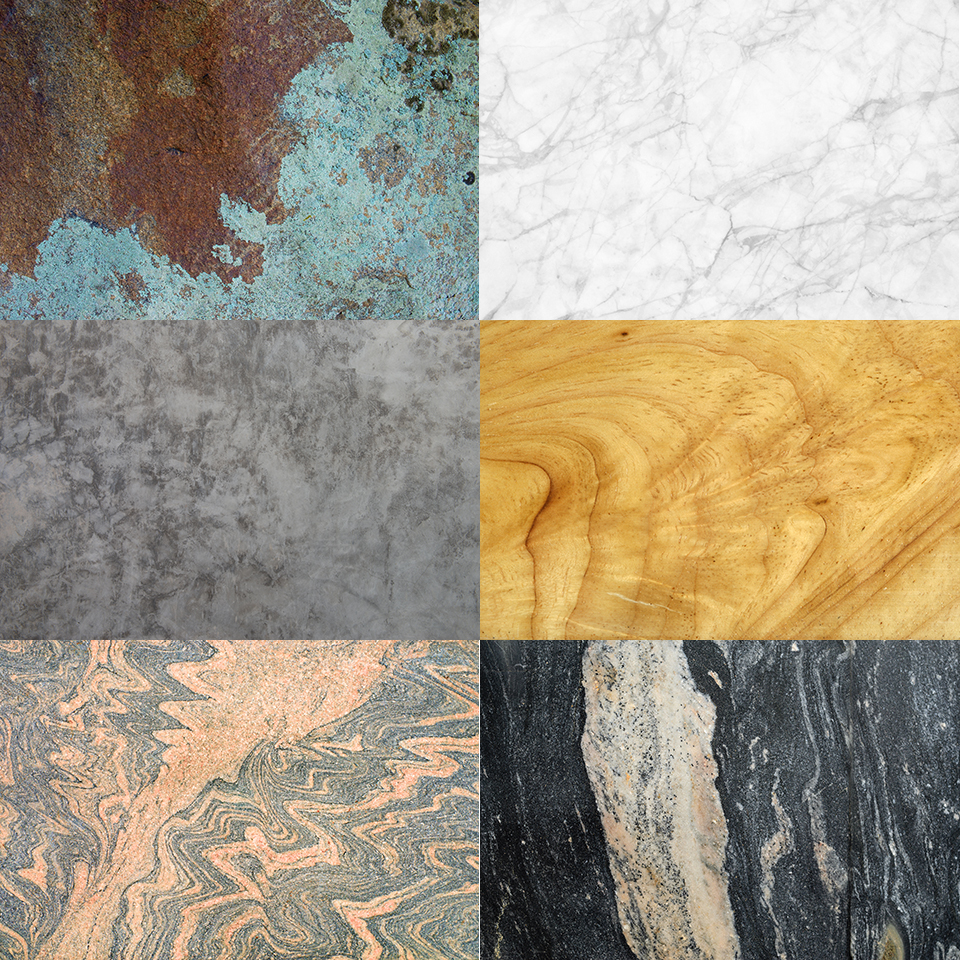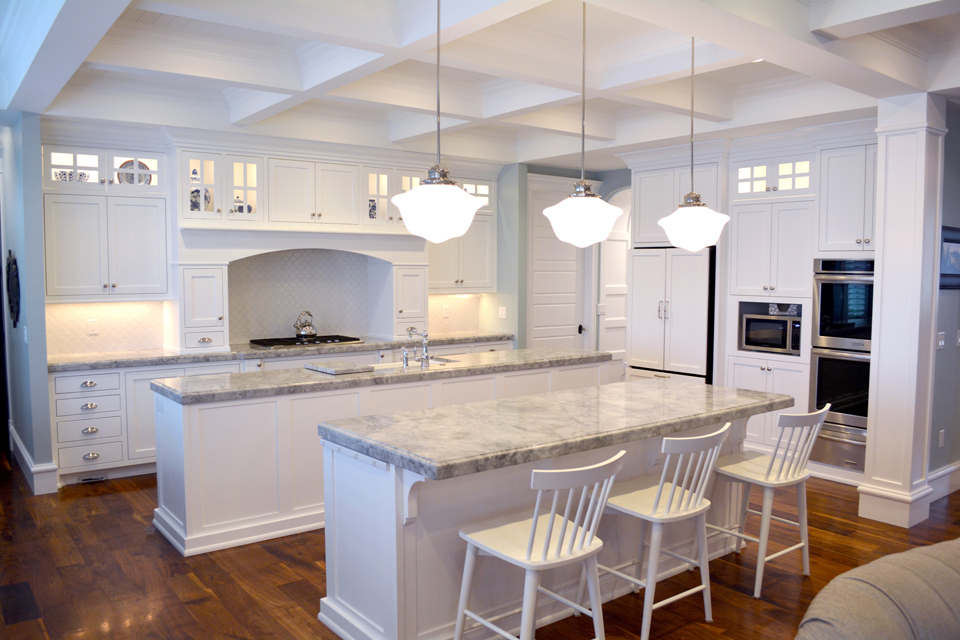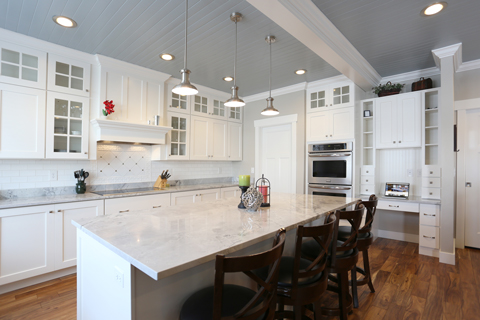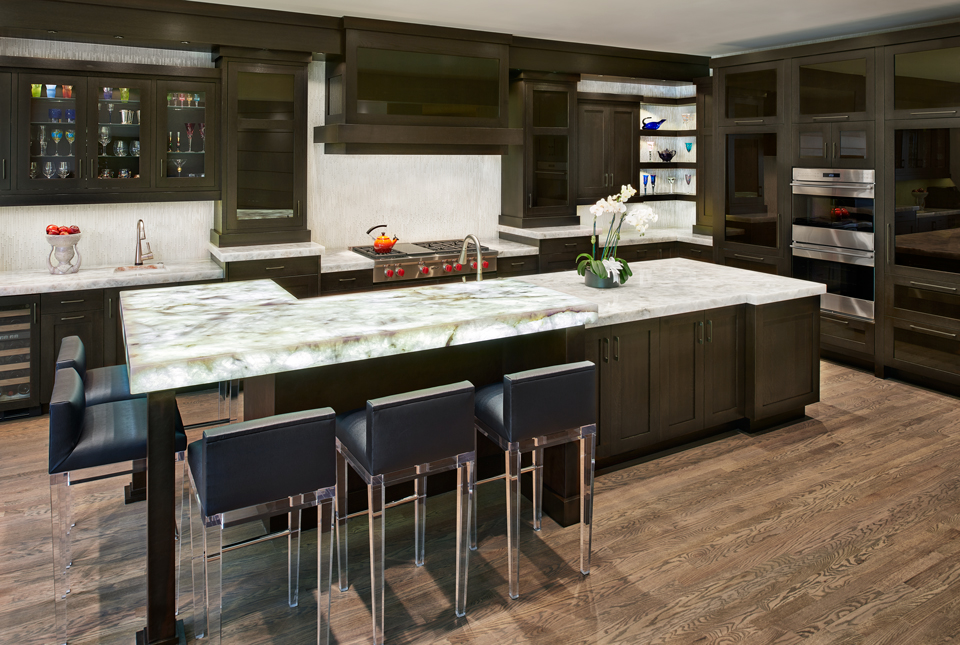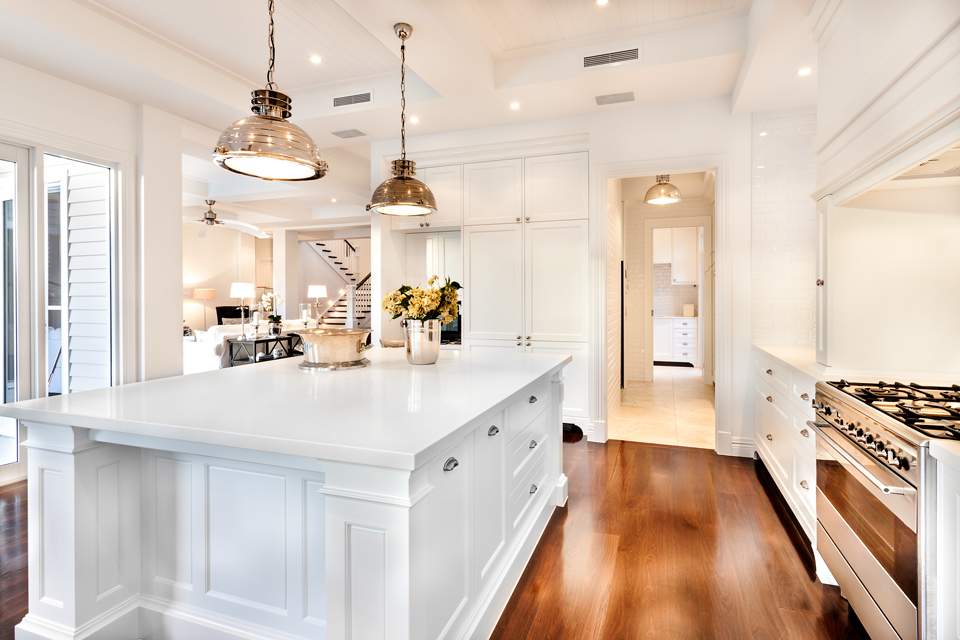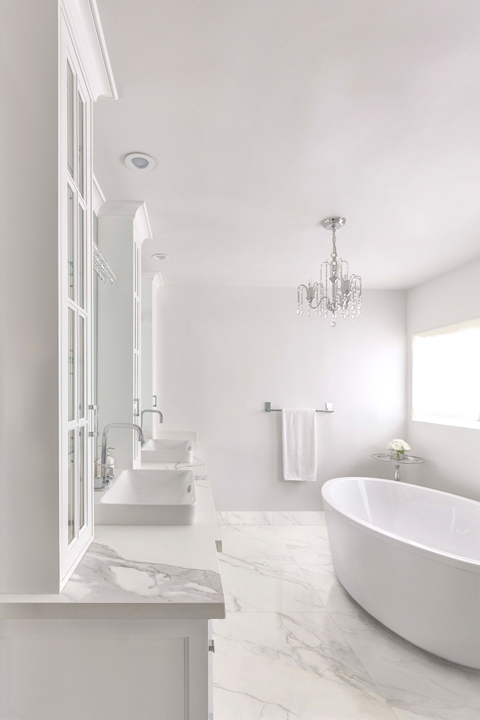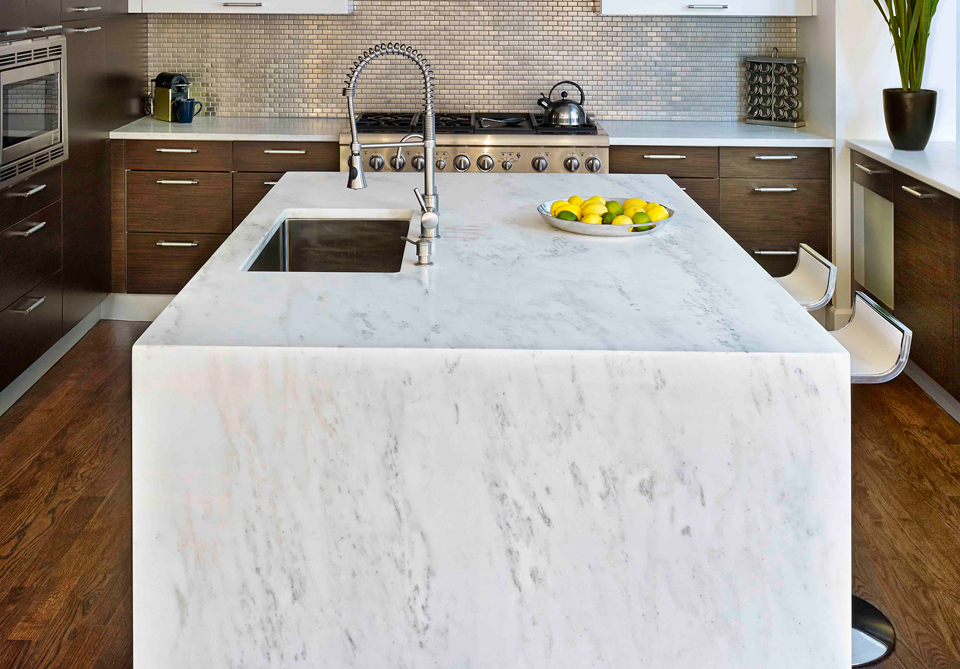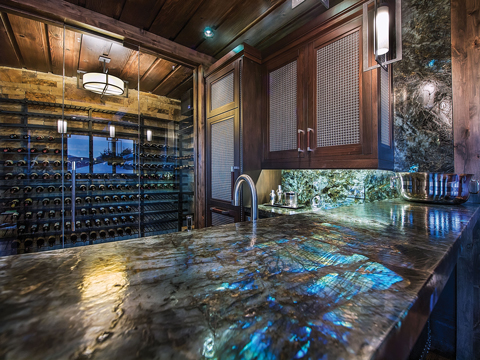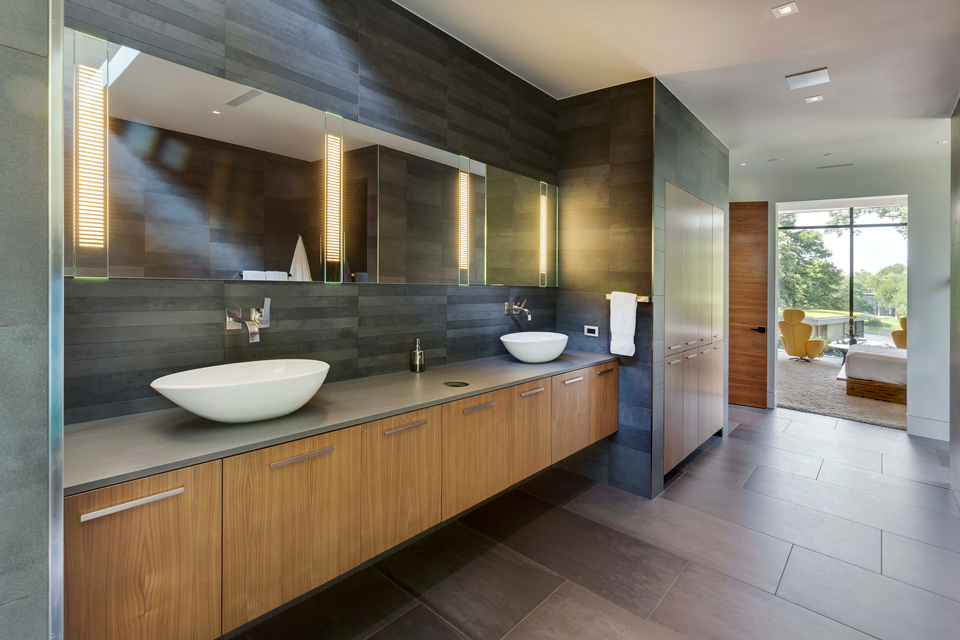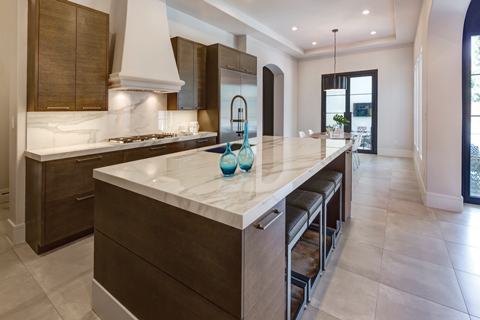How to Customize Countertops
From morning routines to evening social events, countertops serve as the centerpieces of our home lives.
In the kitchen, countertop selection has the power to make or break a space. “Your kitchen is a gathering area. It’s a place you see every day and often the first thing your guests see, so you have to love what you’re looking at,” says Leah Wynn of Salt Lake’s Inside Out Architectural. She and colleague Jenny Rich specialize in tile and backsplash design, and almost all color and inspiration comes from the countertop slab that grounds a room.
“Truthfully, the slab is what you look at when you walk into a space,” says Rich. “Having a beautiful piece of stone is the bedrock for designing the rest of the room.” Because countertops are the visual focal point of most kitchens, and our lives functionally revolve around these surfaces, choosing the material, color, and shape of it are no small decisions. And, in a market that continually evolves, grows, and diversifies, that choice isn’t getting any easier.”
“THERE’S NO SHAPE OR DESIGN THAT WE CAN’T ACCOMMODATE. FROM ARCHED BARS AND NATURAL-EDGE LOOKS, THE ACCURACY AND QUALITY OF FABRICATION HAS GONE UP EXPONENTIALLY.”-
– Brett Brunson, Owner, Evolution Design
Technologies & New Materials Expand countertop Options
With the rise of improved fabricating technology, manmade materials, and natural extraction, countertop customization has grown into an industry of endless choices. To navigate that industry, you must know the available options, seek the ones right for you and your lifestyle, and use the right professionals to guide you through the process.
Custom countertops have dramatically evolved in the past two decades. From material to fabrication, technology has revolutionized how we select and design our surfaces. The most notable changes are in fabricators’ abilities to shape and treat slabs, but the materials themselves now come in more varieties of natural and manmade choices than ever before.
Brett Brunson, founder and owner of Evolution Design in Smithfield, has 15 years of experience, and he has watched the fabrication industry change. His shop includes a 10,000-square-foot inventory warehouse to support his services for fabrication, cutting, and installation. The greatest change he’s seen in his time in the business? The technology used to shape slabs more accurately.
“We can build incredible things,” he says. Using laser templates and water jets to design and shape slabs, he can create countertops with cleaner, more specific lines. “There’s no shape or design that we can’t accommodate. From arched bars and natural-edge looks, the accuracy and quality of fabrication has gone up exponentially.” Brunson’s team can work with clients from selection all the way through installation to ensure they get the exact look and function they need, whether they’re going for traditional or mountain modern style.
And in Park City, the name of the game is mountain modern. Brunson speculates that nearly 90 percent of his clients are looking for straight-edge, flat-polished, or mitered apron edges to create crisp, straight edging associated with contemporary styles.
Ultimately, though, the slab itself is the palette for shaping. No amount of technology can fix a poorly selected countertop. That’s why the people at The Stone Collection in West Valley City have made it their mission to ensure that they provide the highest level of variety, quality, and selection in the business. In a 55,000-square-foot showroom filled with over 8,000 slabs, they’ve considered every detail down to the width and lighting of the aisles to make sure that clients have the space and resources they need to make the right countertop decisions.
“We have the largest selection of natural and exotic stones in Utah,” says Pete Smith, general manager. That collection includes natural and manmade stones of several different types including granite, marble, semi-precious, onyx, limestone, travertine, soapstone, slate, quartz, and quartzite sourced from 34 different countries.
“The world of slab is unbelievable,” echoes Rich from Inside Out. On her last visit to The Stone Collection, she says it took her 15 minutes to walk from the front to the back of the showroom because of the sheer volume of different options.
“Years ago I would say that I was natural stone all the way. But through the years, I’ve seen that manmade materials have a place in this market. If you use the right product in the right area, everybody will be happier.”
Manmade Versus Natural Stone
More and more these days, many of the options for countertop materials are manmade. Technology doesn’t only affect fabrication, but the materials themselves as well. For example, Brunson notes that he’s seen a rise in porcelain slabs, which utilize 3D printing to imitate natural veining from natural slabs, but on a surface that is non-porous, scratch-and heat-resistant, and easier to cut into thin slabs. Smith cites the center’s material, Neolith, as one of the most popular manmade materials, and it is making waves with architects and designers.
While buyers may be reluctant to purchase manmade materials over more traditional quarried stone, the advances that have allowed for their creation increase the ability of the material to be customized tenfold. With products like quartz, Neolith, or porcelain, buyers have control not only over the look, but also the size, shape, durability, and consistency of their slab.
“Years ago I would say that I was natural stone all the way,” admits Smith. “But through the years, I’ve seen that manmade materials have a place in this market. If you use the right product in the right area, everybody will be happier.”
That said, natural stone could still be the right product for many buyers, and options for natural stone are virtually endless. Brunson says that he sells equal parts manmade to natural materials, and that there are many options for using a natural stone with a contemporary mountain style. For example, he suggested Calacatta marble, which has a small amount of natural veining, making for a more mountain modern look than straight white quartz.
“I don’t think natural products go out of style,” he adds. “I love products that come from the earth that are natural and quarried. There’s a uniqueness to them that man can’t recreate, so every customer knows that their piece is one-of-a-kind.”
As trends change and white tones are switched out for warmer ones, he suggests the best way to achieve a mountain modern look might be to blend both natural and manmade stones. “Mountain modern blends both colors and products,” says Smith, who knows designers who have designed homes with white marble kitchens, brown granite bathrooms, and onyx-blend surfaces.
Ultimately, there’s no doubt that the options are out there, but what matters is taking the correct steps to make a good choice.
Navigating the Choices
The amount of options available for countertops, paired with their focal position in a home, inevitably will lead to a client feeling overwhelmed. For that reason, industry professionals have made it their initiative to narrow down choices, crop interests, and send clients home to a space that makes them feel just that—at home.
“What sets us apart from every other stone company out there is our vast selection and quality of our stone, but above all it’s the service we provide for our customers,” says Smith. “If they want to be handheld, we will hold their hands. We pride ourselves on customer service. We have a crew in the warehouse that will move as many slabs as they need.”
“We want to help educate our customers. An educated customer makes better decisions and is happier with the product,” adds Smith. In the end, the secret to great counter selection is as much in the professionals you trust as it is your own taste. In that vein, they offer a few important pieces of advice for new customers curating their custom countertops.
FIRST, trust the right professionals.
“You have to have a good slab guy,” says both Wynn and Rich, who say that when you find something you love, you have to get it in your possession as soon as possible. “You need your guy to get it out of the store and in his hands, because people steal them out from one another.”
SECOND, when looking for your perfect slab, keep an open mind.
Smith recalls customers who have come into their massive warehouse with certain thoughts and expectations that they soon revised. “Once they get into our warehouse and see the selection we have, their minds start changing,” says Smith. “They look at other stuff and leave with something completely different than they thought they wanted.”
The final & most agreed upon piece of advice: go with your gut.
In an industry with such a growing number of selections, clients must trust knowledgeable professionals to help them make decisions or change their minds. “We spend a lot of time investing in employees and making sure that they have the right knowledge to share,” says Smith. The Stone Collection does product knowledge sessions for their employees on new products, where suppliers educate the employees about a particular product. As manmade and natural products continue to change, it requires constant education to keep up.
The final and most agreed upon piece of advice: go with your gut. “Countertop selection is emotional,” says Smith. He encourages clients to bring in personal artifacts, cabinet materials, or art selections and to hold them up to a stone and see how it feels. “Seeing all of the different options laid out in the warehouse helps. Our customers can look at everything and see which slabs make them feel something.”
“At this point we can engineer anything that a customer wants,” says Brunson. “As a business, we do whatever a customer demands.” Often- times, that demand comes from the heart.
No matter what your style, desire, or odd request, the countertop industry will have what you’re looking for. You just need the right tools and professionals to find it.
